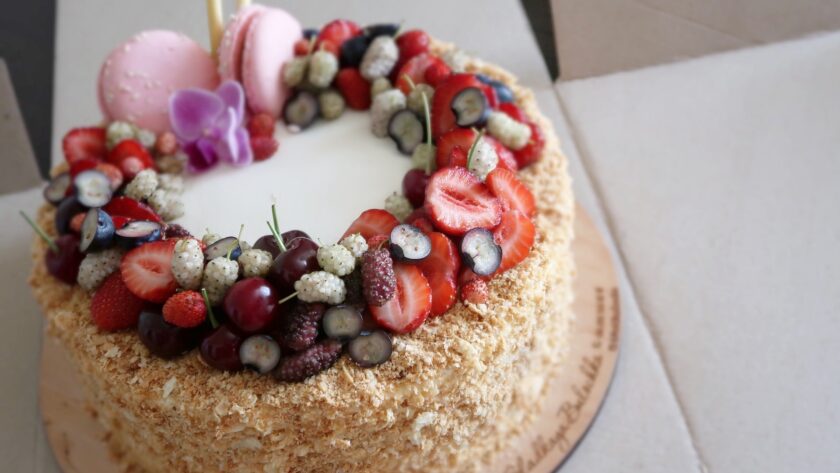Do you pour your heart and soul into creating stunning cakes, only to have them ruined during transportation? Are you tired of disappointing customers or loved ones with damaged desserts? Look no further than the humble cake box! The right materials can make all the difference in protecting your delicious creations. Join us as we dive into the importance of choosing the proper cake box materials to ensure your masterpieces arrive at their destination intact.
Contents
Introduction to Cake Box Materials
Any baker worth their salt knows that the key to a perfect cake is in the ingredients. This also goes for protecting your delicious creations – the quality of your cake box materials matters just as much as what’s inside. Below, is a quick introduction to some of the most popular materials used in the manufacture of wholesale cakeboxes to help you choose the right one.
Corrugated cardboard is by far the most popular choice for cake boxes. It’s strong and lightweight, making it easy to transport cakes without worrying about them getting damaged. In addition, it is inexpensive and recyclable, so you can feel confident about using it. Just be sure to get food-grade corrugated cardboard, as lower-quality options might not be safe for contact with food.
Polystyrene is another popular option for cake boxes. It’s clear, so it shows off your cakes nicely, and it’s also lightweight and shatter-resistant. Unfortunately, though, it is not the most eco-friendly of materials because of being made from petroleum products that are non-recyclable.
Acrylic is a more expensive option, but it has some great benefits: it’s clear (like polystyrene), shatter-resistant, and reusable. If you are seeking out an eco-friendly option, then acrylic is a good choice. Just be sure to avoid versions that contain BPA or other harmful chemicals.
Types of Cake Boxes and their Purposes
Here is a look at the different types of cake boxes and their purposes:
Single Cake Boxes: Single cake boxes are the most basic type of cake box. They typically have a single layer of cardboard and are used for transporting or storing one or two cakes. If you’re looking for a simple and economical option, a single cake box is a good choice.
Double Cake Boxes: Double cake boxes have two layers of cardboard and are designed for transporting or storing multiple cakes. These boxes provide more protection than single cake boxes and are ideal for cakes that need to be stacked or layered.
Cupcake Boxes: Cupcake boxes are specially designed to hold cupcakes. They usually have a divider in the middle to keep the cupcakes from touching each other, and they often come with a carrying handle for easy transport. If you’re selling cupcakes, make sure to choose a box that’s specifically designed for them.
Specialty Cake Boxes: Specialty cake boxes are made for specific types of cakes, such as wedding cakes or tiered cakes. They often have unique features, like built-in supports or padding, to ensure that your cake arrives safely at its destination.
How to Choose the Best Cake Box Material for Your Needs
When selecting the best cake box material for your needs, there are a few points to consider. The most important factor is the type of cake you will be packaging. For example, if you are packaging a delicate cake with frosting, you will need a sturdier box that can support the weight of the cake and prevent the frosting from smudging.
Another factor to consider is how long you need the cake to stay fresh. If you are only delivering the cake locally, you may not need a box that is as durable as one that will be used for shipping. However, if you are sending the cake through the mail or shipping it long distance, you will need a stronger box that can withstand being jostled around during transit.
Take into account your budget when selecting a cake box material. Some materials, such as cardboard, are very affordable but may not provide the level of protection your cake needs. Other materials, such as plastic or metal, can be more expensive but offer superior protection for your cake. Ultimately, it is up to you to decide what trade-off you are willing to make between cost and protection when choosing the best cake box material for your needs.
Tips for Maximizing Protection with Your Cake Box Material
When it comes to protecting your delicious creations, the importance of cake box materials cannot be understated. Here are some tips for maximizing protection with your cake box material:
1. Choose a sturdy material. Cardboard is a great option because it is strong and durable.
2. Make sure the box is the right size for your cake. You don’t want the cake to be too snug or too loose inside the box.
3. Use padding inside the box to protect your cake from bumps and jostling. Bubble wrap or packing peanuts work well for this purpose.
4. Seal the box tightly to keep out dust and other contaminants. Tape around all edges of the lid to ensure a tight fit.
5. Store the box in a cool, dry place until you’re ready to transport or serve your cake.
Conclusion
Cake boxes are essential for protecting your delicious creations and ensuring that they arrive in perfect condition. We have discussed the different materials used to make cake boxes, why each material is important, and what qualities you should look for when selecting a cake box. With this information in mind, you can now confidently select the best material for your cake boxes and keep your cakes safe during transit.




